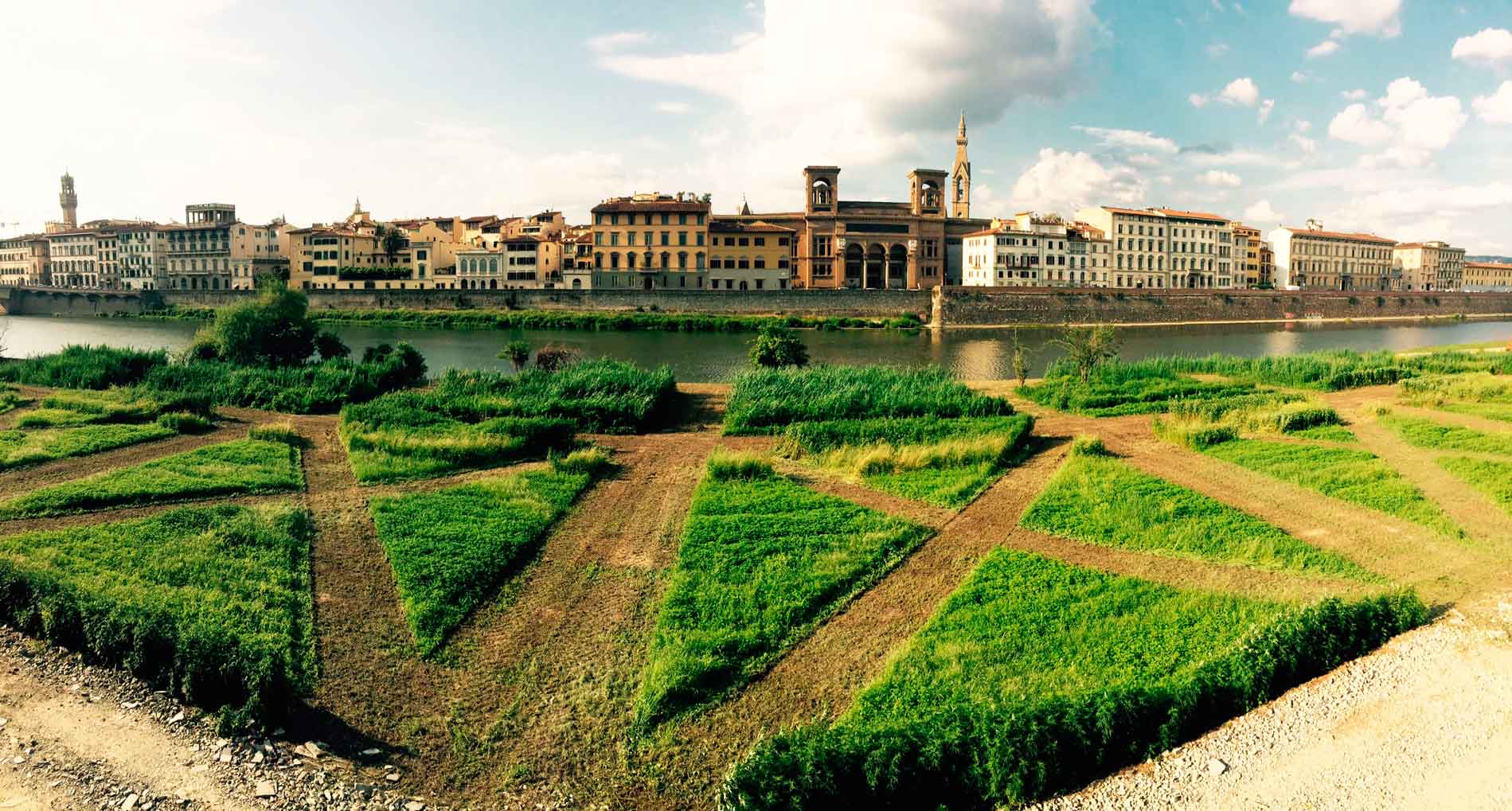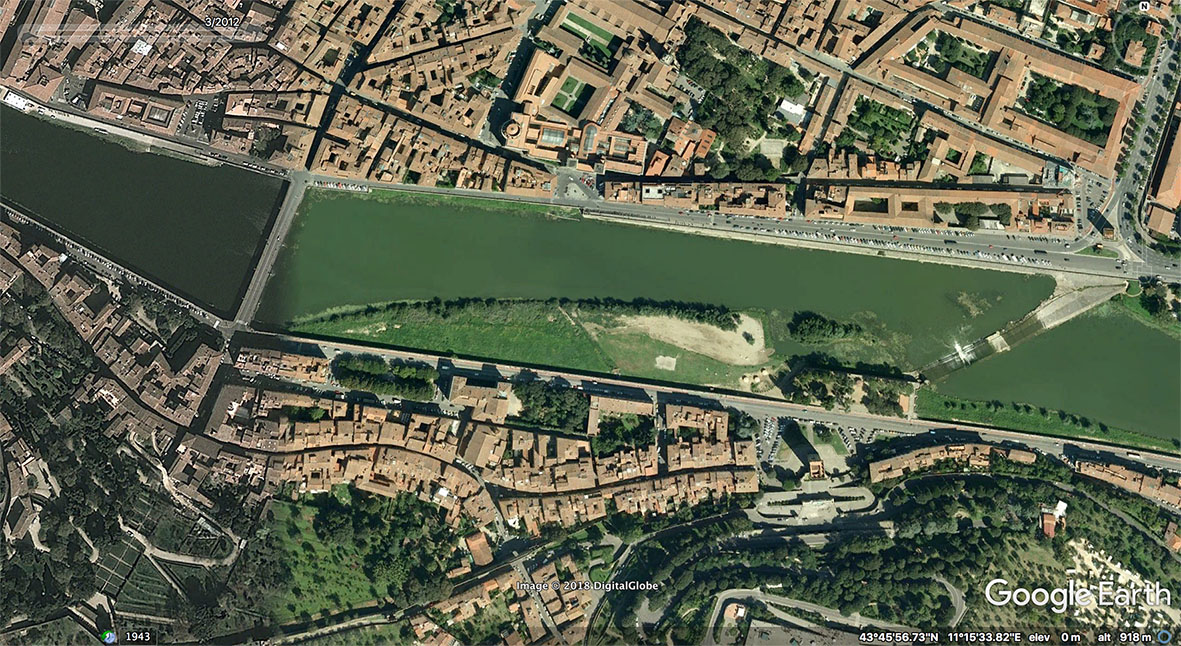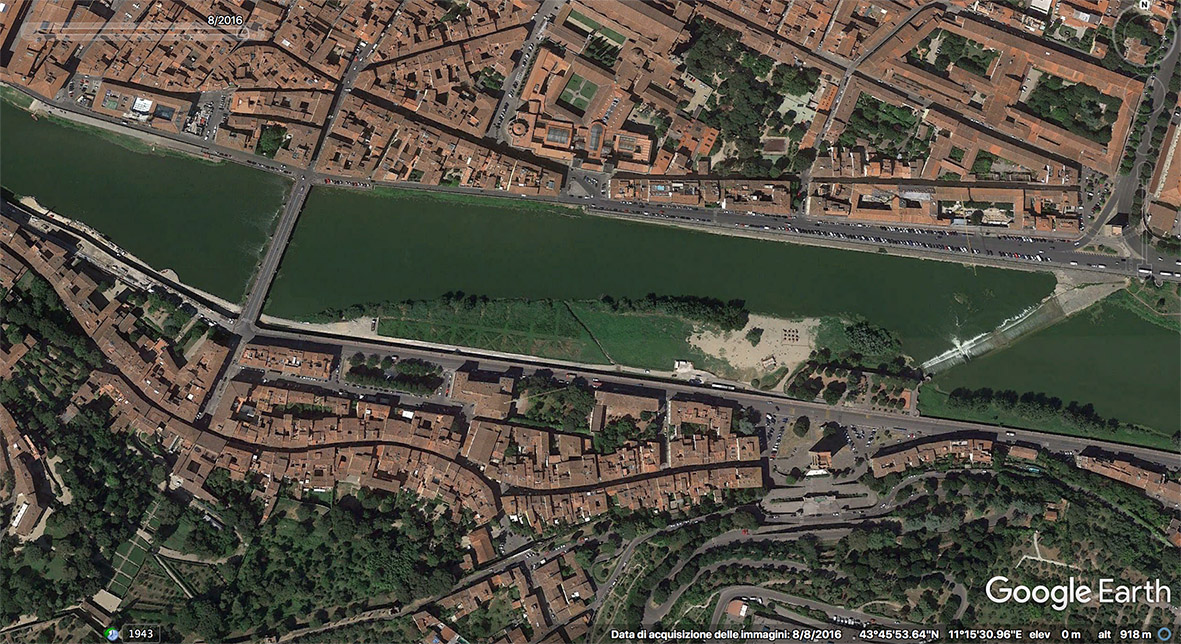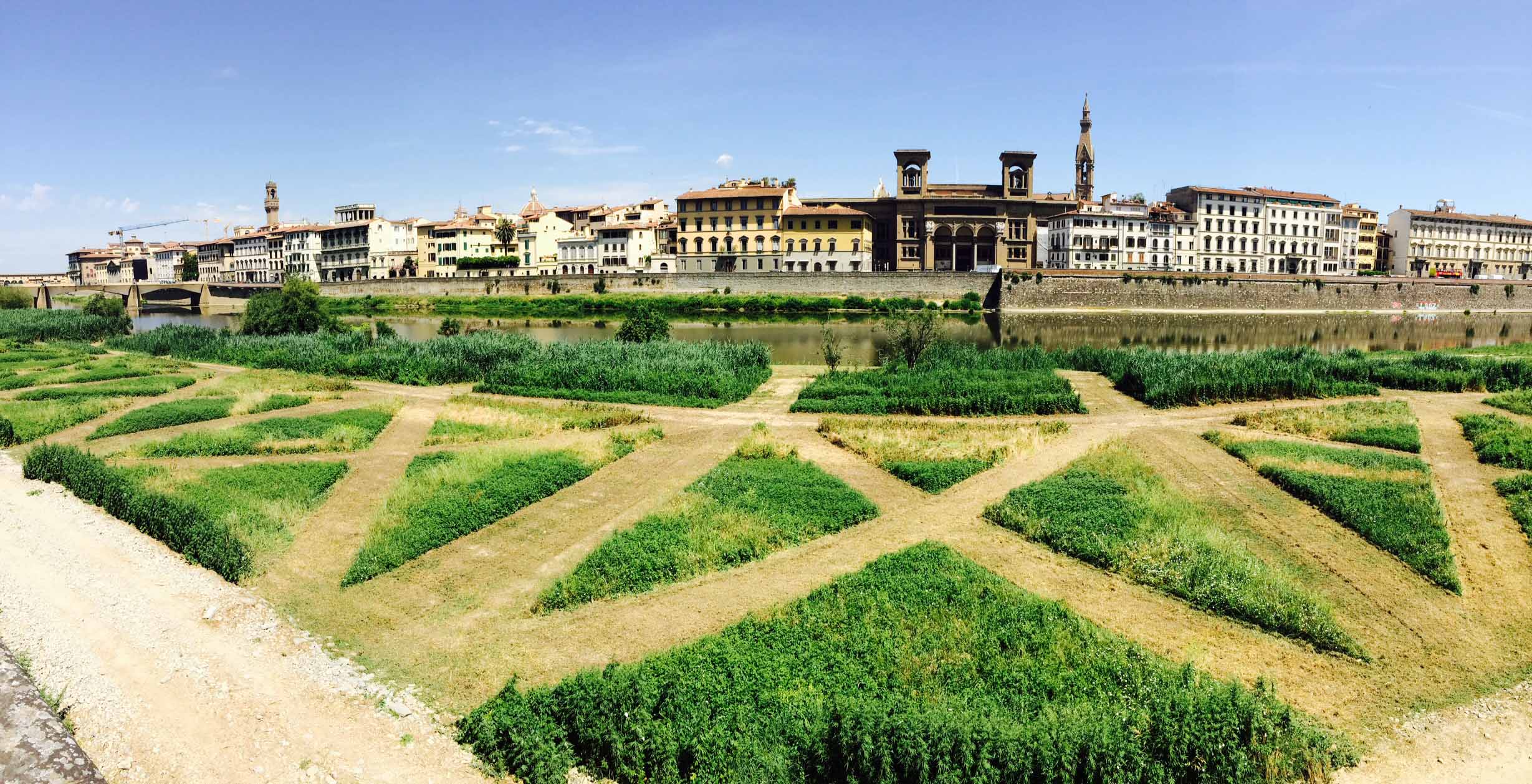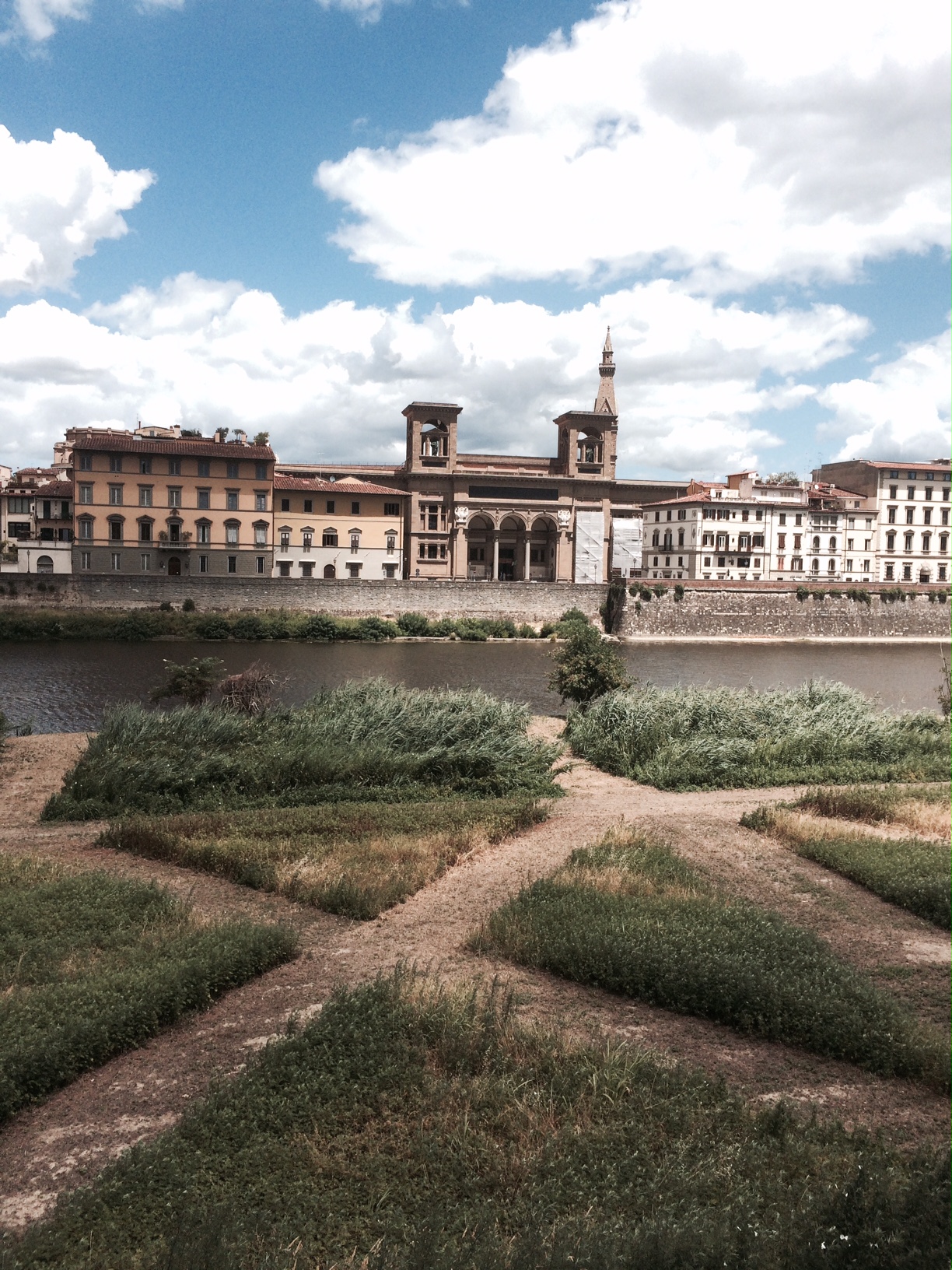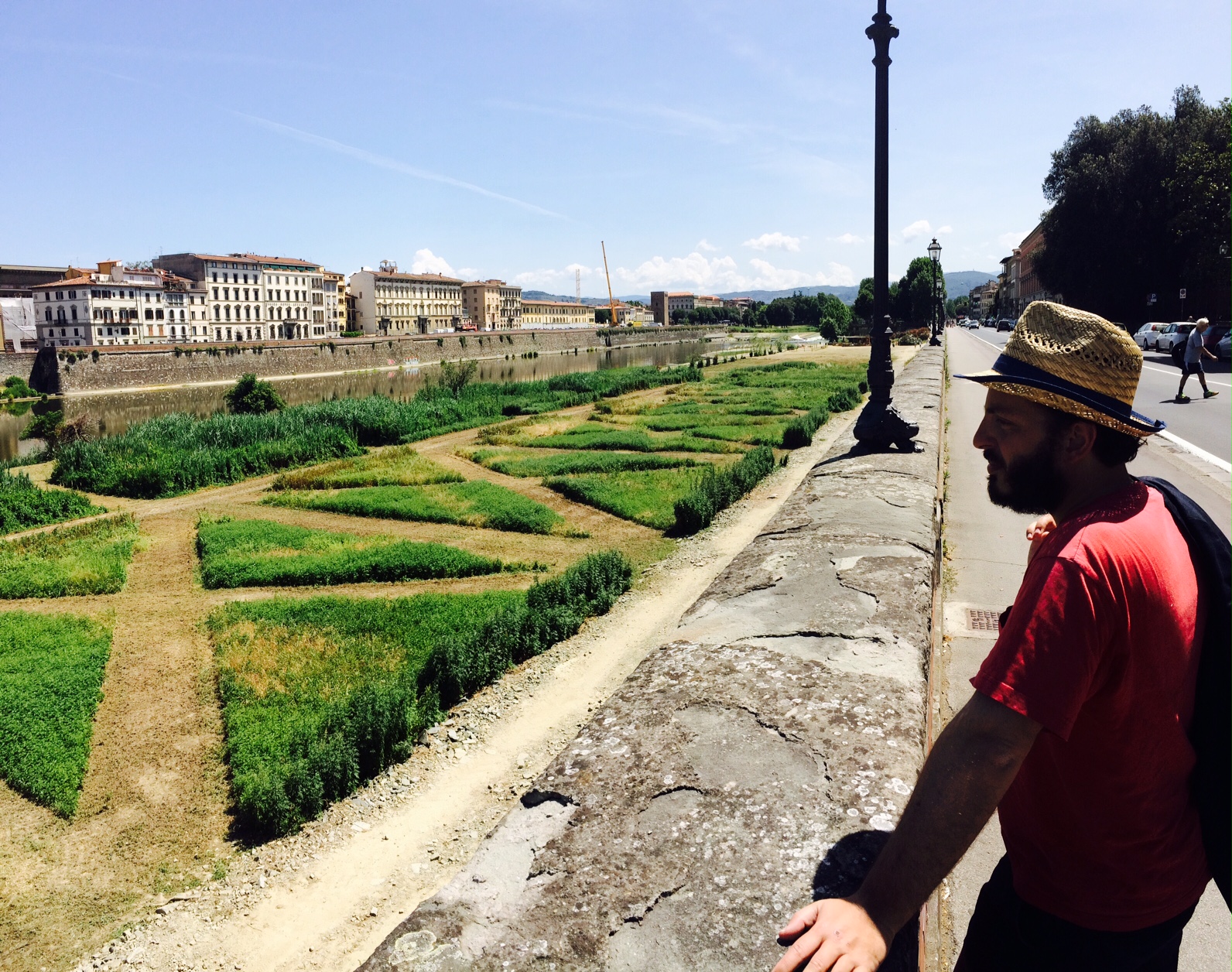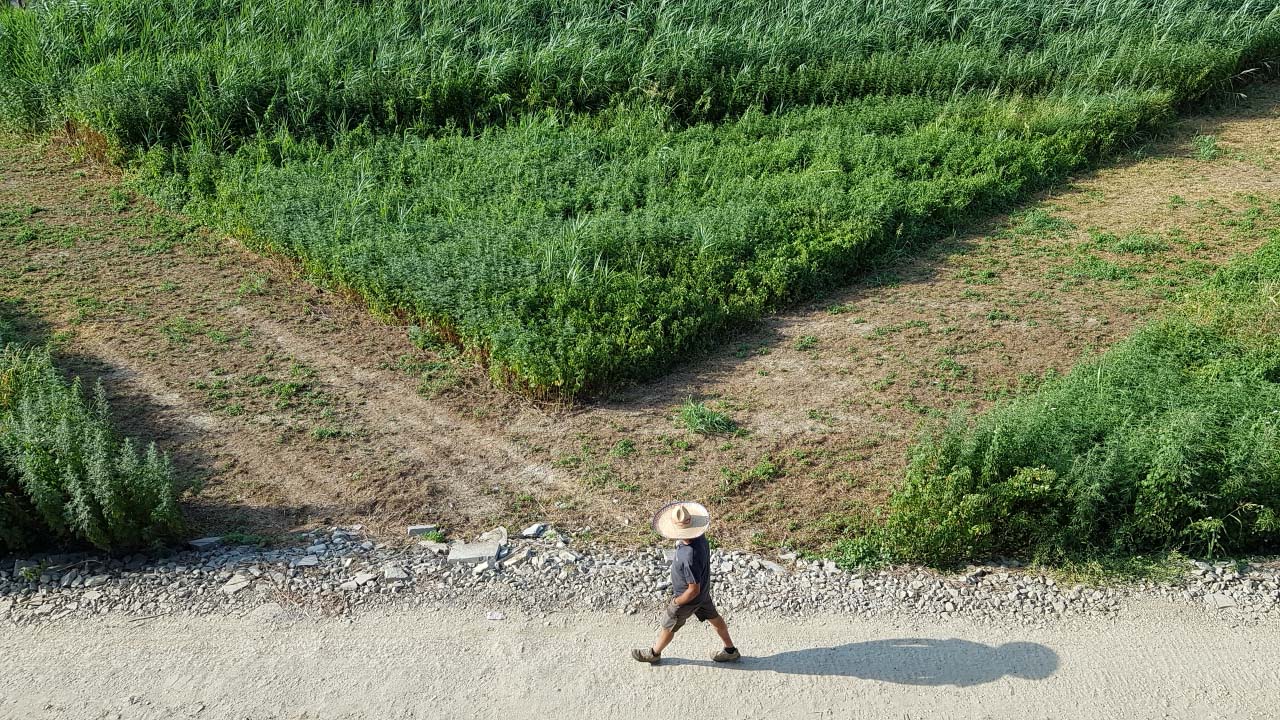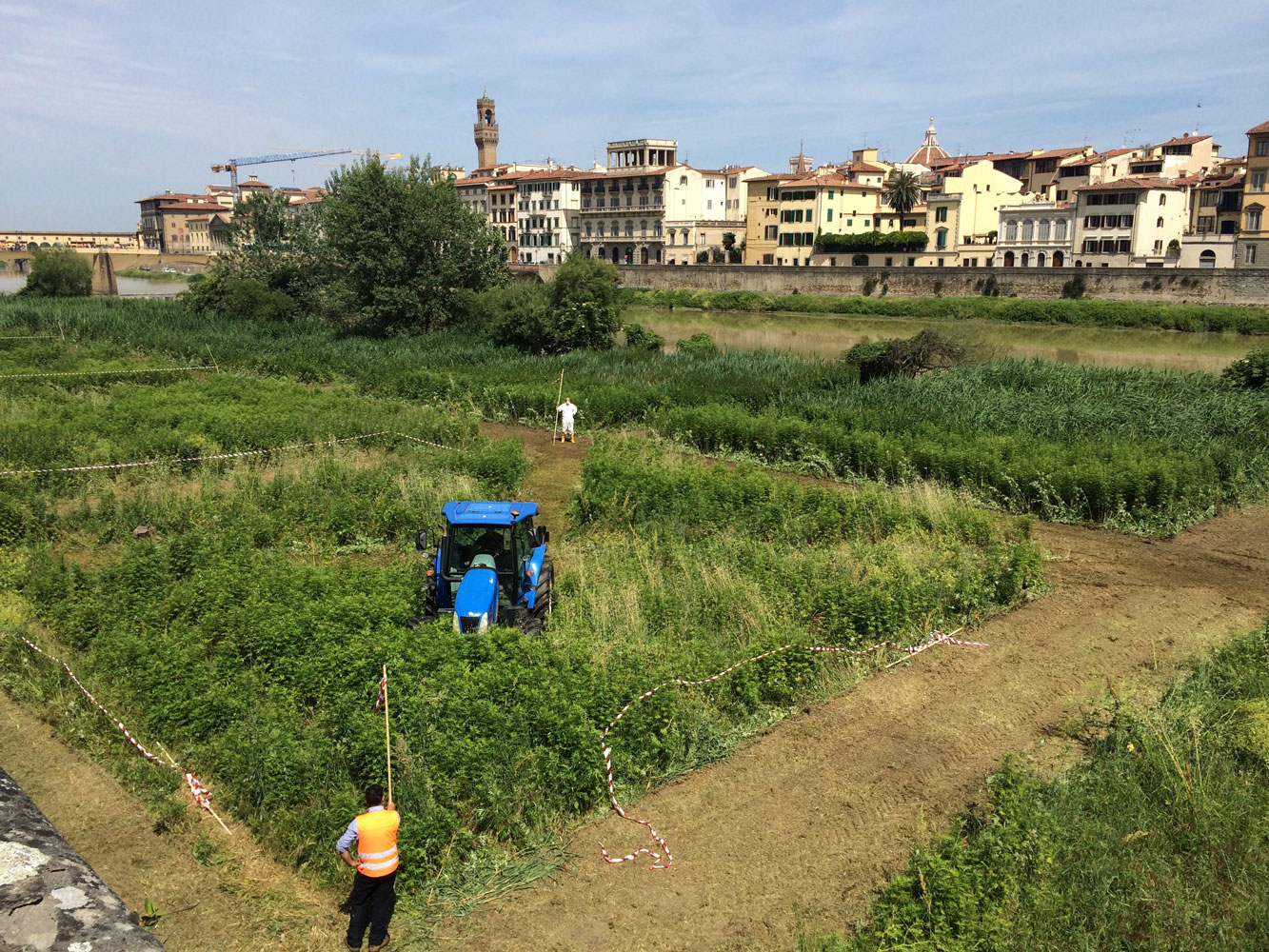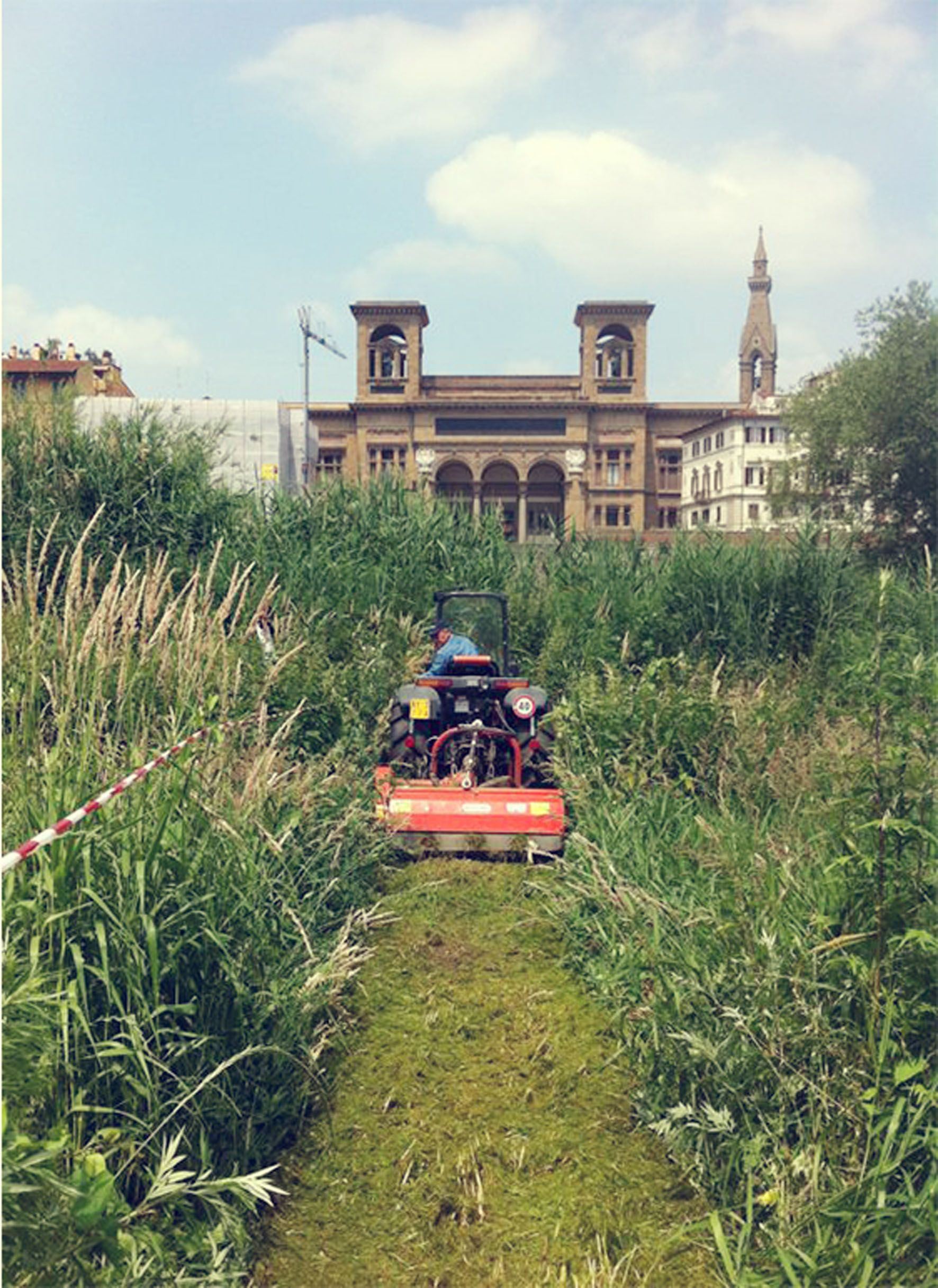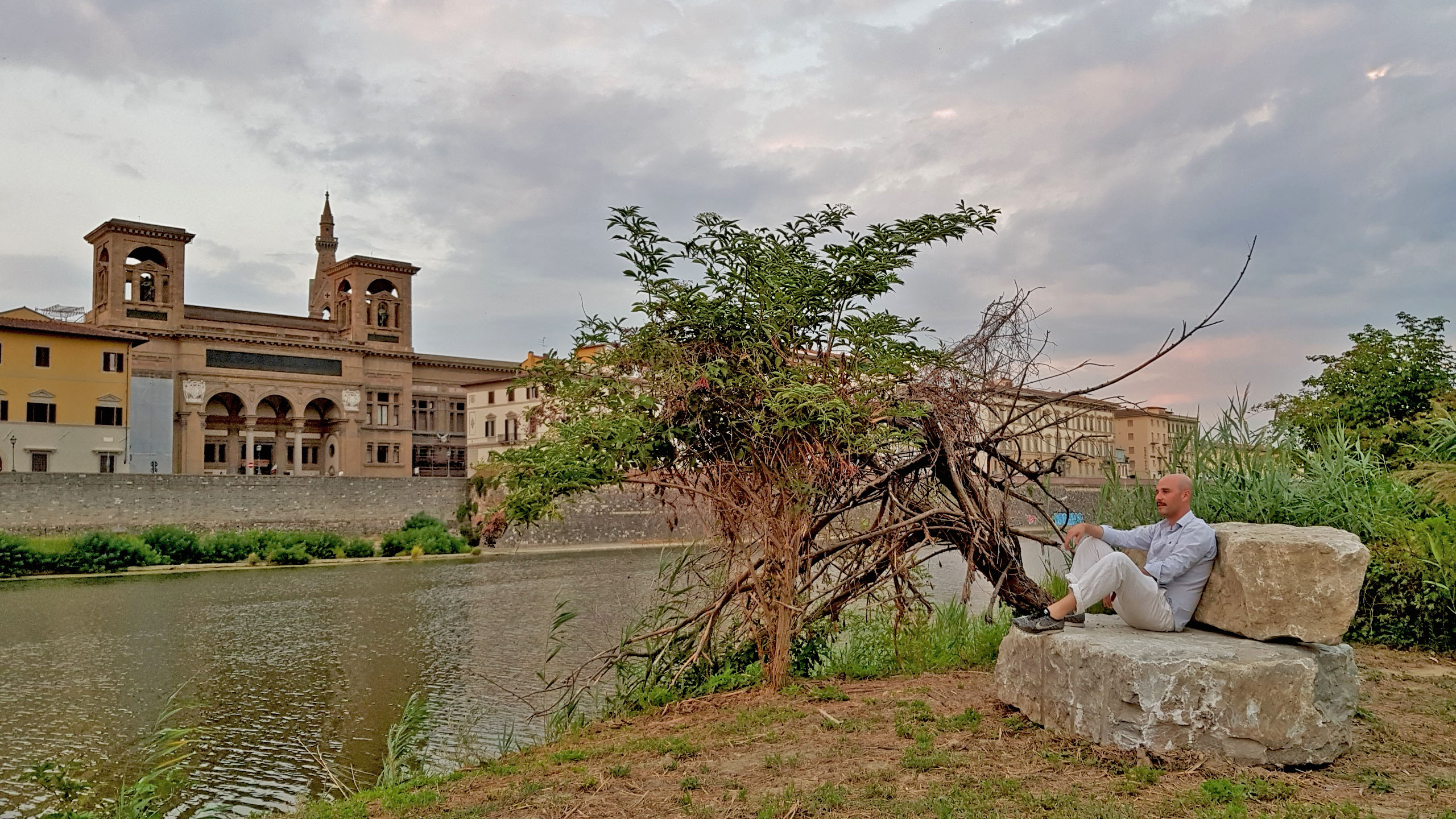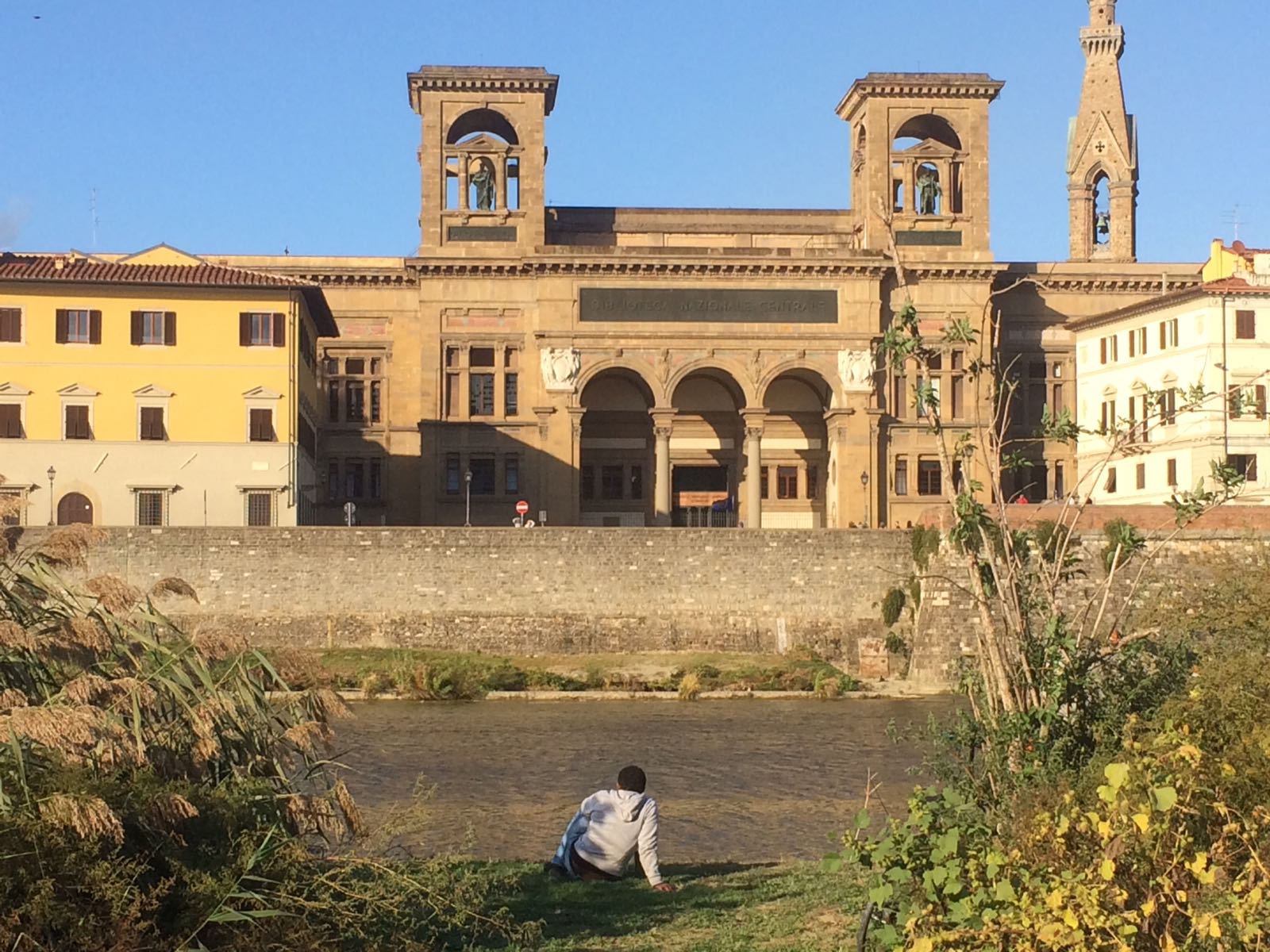Previous state
The Terzo Giardino project is located on a bank of the Arno River in an area that had lain neglected and unused for fifty years. One of the main reasons for this abandonment can be traced back to an emotionally-charged event, the great flood of Florence in 1966, which estranged the city from the river. Ever since then, the place, together with others along the river banks, had lost its function of connecting urban life with nature and the flow of the Arno. Other economic and cultural reasons also influenced the deterioration of the area, despite its strategic position and incomparable views of the old centre of Florence. Only municipal employees had been working in the area for security reasons, in particular cutting back the natural growth of vegetation. Somehow, the neglect favoured the formation of a sort of natural reserve in a highly central location where plants and animals were free to live undisturbed by the life of the city.
Aim of the intervention
The project began with making paths opening the way through the vegetation growing wild along the riverbank and against the backdrop of the ancient city. The word “Terzo” (third) is directly inspired by the French landscapist Gilles Clément and his work The Third Landscape, which advocates a politics of humanist ecology that is able to value neglected, unused land. It calls for openness to a different kind of chaotic beauty, or a third beauty in harmony with seasonal changes, and one that contrasts with the orderly “first beauty” which is historically influenced by the Renaissance. The project’s references are ancient botanical gardens like the Giardini dei Semplici in Florence, dating back to 1545 and, in general, the Italian gardening tradition.
As if it were a metaphor for Clément’s manifesto, the effort to establish a relationship between a non-humanised nature and the cultural heritage of Florence, both material and non-material, was criticised by people who considered that the city’s historical legacy, one of its key themes, had to involve contemporary art as well. The approach of the plan was that wild vegetation stays in tune with everyday rhythms and can be seen as integrated within the historic course of events if it is accepted that diversity and changes are part of cultural progress.
Description
The project has adopted the same method as that used by the City Council in its maintenance of the banks of the Arno River, although with the request that the tractors should be used only for marking out paths and not for cutting back all the vegetation. A design, divided into two parts was then created, one a regular section made up of parterres and visible from Lungarno Serristori and, the other, bordering the river, taking the form of stanze, a series of “sheltered spaces” sometimes consisting of a bench made of local stone, or shady trees. The stanze have been made as artifacts full of wild plants, tucked away from the urban fabric in order to rediscover nature, yet allowing contemplation of the historic city on the other bank of the Arno. This was a low-cost proposal and maintenance can be carried out periodically in half a day. In winter and part of autumn, the area is partly flooded and there is only one track for walking to the bridge. However, in spring and summer, uses change and the places closest to the river are cool places for relaxing on hot days.
Assessment
Since 2012, Terzo Giardino has shown how it is able to keep changing its relationship with the city. At first, the work was destroyed by municipal management because of poor communication among the internal services but it is now recognised by the public administration as a sustainable intervention which has come to form part of the city’s general agenda of activities. Meanwhile, World Wildlife Fund (WWF) has classified it as a place of public interest that should be protected for migrating birds. The new public space has given rise to discussion among scientists, politicians, artists, and other people involved in issues of sustainability, thus encouraging new awareness about the uses of landscape outside the busier commercial spaces. Terzo Giardino is gradually turning into a space for the residents of Florence, a place to hide away from the crowded main tourist routes, and appreciated by all those who are looking for new urban points of view.
Teresa Navas
[Last update: 24/10/2020]


